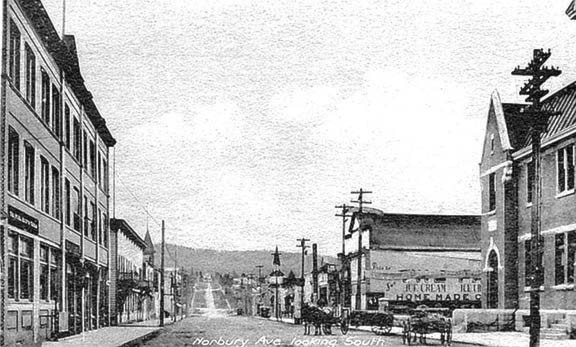Jim Cameron
The city of Cranbrook wanted to be a lot of things in 1907: an industrial, mining, lumbering, agricultural, commercial, entertainment, cultural, railway, tourist, hunting, fishing, sports and legislative centre were all on the collective list.
What Cranbrook was at the time, among other things, was seven hotels, one hospital, two newspapers, two banks, one school, a curling/skating rink, a tennis court, a golf course, an electric works, a telephone office, a waterworks, a fire department, a number of small businesses, some livery stables, a CPR depot, numerous lumber mills, a brickyard just outside of town, at least 40 square blocks of houses of all shapes and sizes and a population of 3,000 people.
The summer of 1907 saw the original Cranbrook Hotel moved south across the alley to become the Annex while construction began on the present day structure. On the opposite end of Baker Street the city's first courthouse was nearing completion and, across the tracks a large addition to the St. Eugene Hospital was under construction. It was enough to satisfy at least some of the hopeful citizen's dreams of the future.
Still, for others, the announcement in the Herald newspaper of April 25, 1907, must have been promising: "The theatre going public in Cranbrook will no doubt be pleased to learn that arrangements have been completed for the erection of a $12,000.00 opera house." Undoubtedly, for those of a cultural bent, things were certainly looking up.
There was, in fact, a theatre-going audience in town at the time, but the problem was that there was not really a theatre to go to. There were a few small, private halls that sometimes served as playhouses, the most notable being the Wentworth Hotel Hall on Baker Street, for a time referred to as the Wentworth Opera House, but no real theatres.
Thus, when the unlikely quartet of druggist Robert E. Beattie, tobacconist Samuel J. Mighton, Canadian Hotel owner Joseph Brault and hardware store owner John G. McCallum undertook to finance the construction of an actual opera house on Norbury Avenue there were undoubtedly some in town who happily unloosed tuxedos and gowns and dusted off the pearls and lorgnettes in preparation of things to come.
As it turned out, opera was about the last thing to make an appearance, but no matter, Cranbrook would soon have a place that for the next 44 years would serve as a veritable melting pot of local culture and entertainment.
From vaudeville to drama, from fancy balls to rip-roaring late night hollers, from lectures, dinners, meetings and conventions to boxing matches, auto shows, revivals and all things in between, the Cranbrook Auditorium, as it soon came to be known, would host it all.
By all accounts, the auditorium was not a fancy building — and it is almost solely by accounts that one must describe the place as it would seem that no proper photographs of the exterior have yet come to light.
Thus, with the exception of its partial appearance in a few long shots of the entire street, the actual facade of the Cranbrook Auditorium remains rather anonymous over the years. Nor was there much description as to its appearance when it was originally constructed. Suffice to say it was made of wood with little exterior decoration.
As to size, the present day Armond Theatre on 10th Avenue, when constructed in 1951 following the demolition of the auditorium, fit quite nicely on the original footprint.
The cellar was excavated and the foundation completed by late May, 1907, under the guidance of local contractor George Leask who, it may be added, built a whole lot of Cranbrook in the day. The building itself was 45 feet wide by 100 feet long. The theatre portion constituted 45 feet by 45 feet with a 30-foot by 40-foot stage and a 23-foot-high arched ceiling to accommodate an upper viewing gallery.
The space also included five dressing rooms, a properties room and, it is presumed, a lobby. Heated by two furnaces, it was promised that the house [theatre] would be made modern in every way in a manner that would give the people every convenience and comfort.
"It will be the finest and most cosey opera house west of Winnipeg," declared the Prospector newspaper, which the publication later down-sized to "one of the best in the interior of the province."
The seating capacity was somewhere between 800 and 900 with new, comfortable opera chairs and decent acoustic properties, a necessity in a time before the microphone became commonplace, and scenery (stage backdrops) painted by Charles Miner of Chicago.
Contractor Leask pushed the work along at a rapid rate. The roof went on in July and the building was mostly completed when it was officially opened on Tuesday, August 13, by former mayor and grocer G.T. Rogers.
"The people of Cranbrook have reason to feel grateful to the public spirited individuals who are building the new opera house. Such a building has been wanted for a long time in this town, and now that one is being built the people can feel still better when they know that no expense is being spared to make the house one of the best ... That is the Cranbrook way, you know," said the Herald of July 18, 1907.
Cranbrook people were undoubtedly grateful, if for no other reason than the fact that it wasn't their tax money building it. How grateful, in terms of attendance, remained to be seen.
